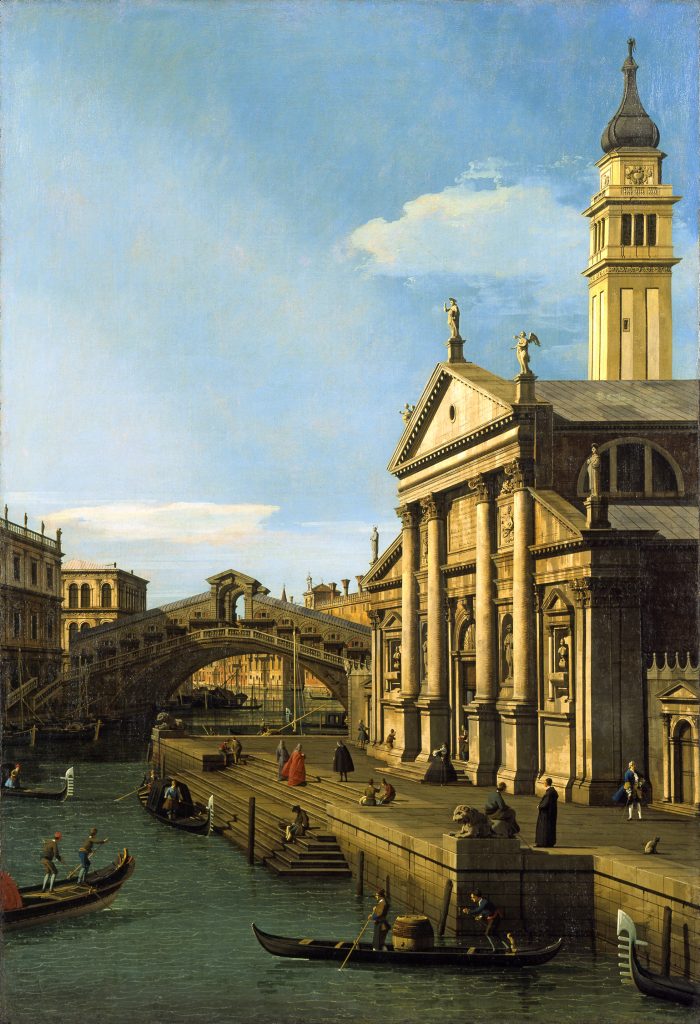Capriccio: The Rialto Bridge and The Church of S. Giorgio Maggiore (work of art)
Artwork Info
Key Ideas
- The painting features two famous landmarks in Venice, Italy: the Rialto Bridge and the Church of San Giorgio Maggiore. Both structures were built during the Renaissance and feature designs based on classical antiquity.
- The scene depicted in this painting is not real. The artist depicted landmarks from different areas of the city and made them appear to be side by side.
- Canaletto was an Italian painter who created cityscape paintings in the 18th century. He was often hired by wealthy tourists to create paintings of Venice landmarks.
- Capriccio is the Italian word for a whim. The term is used to describe made-up scenes like this one.
Learn More
Canaletto was one of the most successful European artists of his time. He is best known for his painted cityscapes of Venice, Rome, and London. Many of his paintings depict imaginary city views. This painting combines two famous landmarks that are located in different areas of Venice. These landmarks are the Rialto Bridge and the Church of San Giorgio Maggiore.
The word capriccio means “whim” or “sudden idea” in Italian. Canaletto was skilled at capturing detail and creating balance in his capriccio paintings. These qualities make fictional scenes look more realistic. Canaletto made subtle adjustments to the architectural details, viewpoints, and land features of real places. His small changes created the illusion of accuracy in his paintings.
Travelers on the Grand Tour commissioned Canaletto to create souvenir paintings of Venice landmarks. The Grand Tour was a popular trip among wealthy, young (mostly English) men in the 18th century. The men studied ruins, cities, landscapes, and art throughout Europe during their tour. The tour was intended to support a man’s university education. Venice was a key stop on the Grand Tour because many classical buildings and artworks are located there.
tags: light, weather, boats, water
Additional Resources
Resources for Teachers:
- Read an essay about the Grand Tour.
- Explore a web page that explains the detail in Canaletto’s paintings.
- Read an article about the artist and view a series of his paintings.
Resources for Students:
- Explore a web page that features Canaletto’s paintings of European landmarks.
- Look closely at another painting in the NCMA collection that was considered to be a Grand Tour souvenir.
- View more examples of capriccio paintings.

